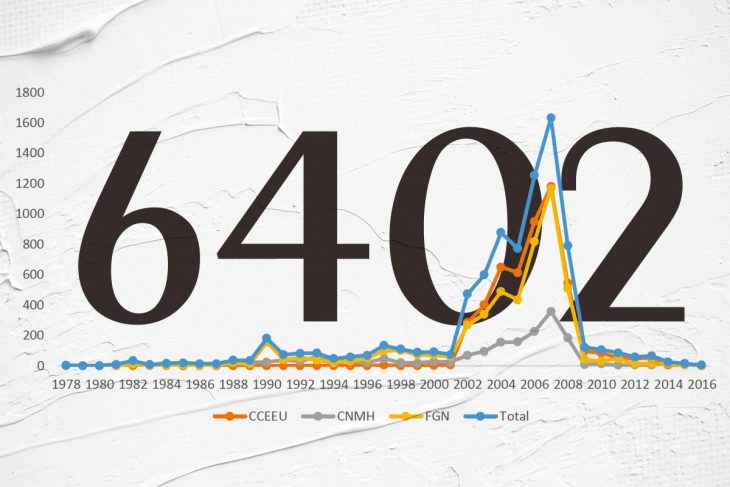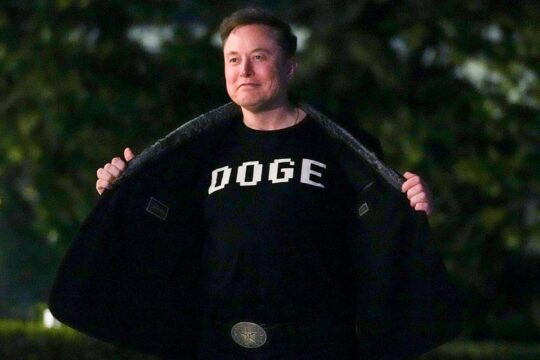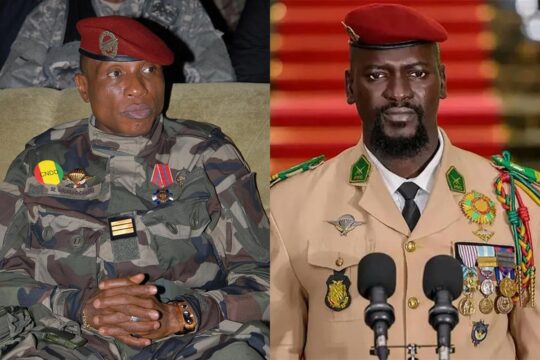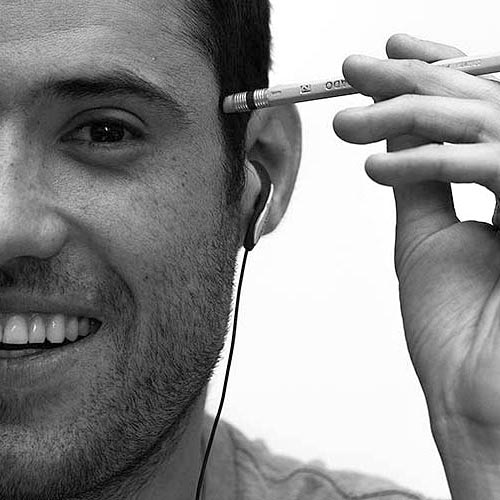Over the past two weeks, Colombian politics has revolved around the number 6.402. This is how many civilians were murdered by military officials between 2002 and 2008 and then unlawfully passed off as rebels killed in combat, a tragedy that has appalled Colombians for over a decade and that became euphemistically known as ‘false positives’.
It is also one of the key findings announced on February 18 by Colombia’s Special Jurisdiction for Peace (JEP), the special tribunal stemming from the 2016 peace deal with the Revolutionary Armed Forces of Colombia (FARC), as part of the prioritisation plan for its macro-case on extrajudicial executions committed by state agents.
In a 38-page document, the tribunal outlined the steps it will take to build its case over the following months and identify those most responsible for the orders and policies that allowed these crimes to happen within the military forces tasked with protecting their countrymen. It follows another crucial progress, after the JEP unveiled its first major indictment in late January, establishing in a separate macro-case that – as JusticeInfo told – kidnappings committed by the FARC guerrilla amount to “war crimes” and “crimes against humanity”.
One new problem arose this time though: the number 6.402 set off a political storm that underscores several tough political and legal questions the JEP is already facing as it pursues its first major investigation against actors involved in Colombia’s 52-year-long armed conflict different to the FARC rebels who laid down their weapons.
Bottom-up investigations
Even though this announcement by the JEP garnered almost as much media attention as the one right before, they are markedly different in nature. The decision concerning kidnappings was an indictment, which means FARC’s former top brass have to decide whether they accept or reject the charges. Depending on their answer, they face either more lenient sanctions or an adversarial trial entailing prison sentences.
In this more recent decision, the JEP’s Judicial Panel for Acknowledgment laid down its criteria to build the case and explained publicly – for the first time – which specific regions and military units it will focus on to illuminate the broader criminal pattern. In line with this approach they termed “from the ground up”, justices will first present indictments in six sub-cases and use these to glean information on the underlying patterns of behaviour and the institutional norms and culture that allowed such crimes to occur.
This means that after bringing charges against officers with regional command, the JEP will then present its case against those most responsible at the top, potentially including members of the top brass of the Armed Forces and the Defence Ministry during those years.
This fact-finding method is a stark contrast from the kidnapping case, which was built the other way around. In its January indictment, the JEP laid down its charges against 8 former FARC commanders – one of which has since died – and will then open up sub-cases detailing crimes committed by local commanders in the guerrilla’s different regional structures.
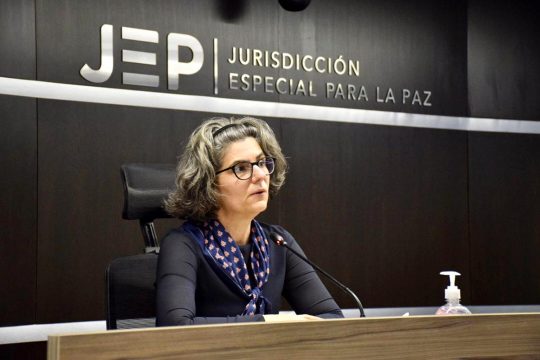
No explicit written order
There are several reasons for this difference. As Justice Info told, the tribunal was able to reconstruct how the leadership of the strongly hierarchical guerrilla was personally responsible for approving kidnapping civilians as a source of revenue. There’s also a more pragmatic reality: 13.060 rebels laid down their weapons and are bound by the peace accord to comply with the transitional justice system, including the JEP and the Truth and Reconciliation Commission. Owning up to their responsibility, telling the truth and redressing victims are conditions for more lenient sanctions.
False positives, however, did not necessarily follow an explicit written order but were rather the result of norms and perverse incentives like body counts and prizes. Scores of low-ranking soldiers with sentences or investigations in the criminal justice system have begun owning up to their roles in extrajudicial executions and telling JEP justices what they know. Many are now on parole after having already been imprisoned for 5 years, another direct benefit of collaborating with the transitional justice.
This is the information the tribunal is using to build its case from the bottom up, given that many higher-ranking officers – who have also sought acceptance into the JEP – have been less forthcoming. In total, the tribunal has interviewed 320 officers, from generals to non-commissioned officers, at length.
The bellwether cases
The mosaic of regional cases prioritised by the JEP – whose indictments are expected in the coming months – gives an overview of where the probe is heading. One investigation centres on Antioquia, the country’s second-most populous department and where a quarter of all crimes took place, and will probe executions carried out by officers from six military battalions. One such unit, the Pedro Nel Ospina Battalion, even won a combat casualties contest despite being a non-combat unit specialising in infrastructure.
A second one will hone in on the La Popa Battalion operating in the Caribbean, deemed a ‘representative military unit’ given its surge in executions between 2002 and 2005, even though it wasn’t an area of the country where rebels were rife. Albeit one of 200 battalions operating nationwide at the time, it concentrates 9% of all officers standing before the JEP. Another one, focusing on the Catatumbo area on the border with Venezuela, will shed light on two patterns of behaviour: how state agents recruited unwitting victims from other parts of the country, duping them with fake job offers into traveling there, and how they deliberately targeted vulnerable persons with mental health illnesses or problematic drug use.
Simultaneously, the tribunal narrowed down the timeframes where it will concentrate its inquiry: between 2002 and 2008, matching the years with the highest death tolls.
Human rights organisations welcomed the prioritisation plan, but are still pressuring the JEP to begin climbing the rungs of the hierarchical ladder towards the decision-making levels. “We feel they should also take into the account the career path of certain officers over time and geography, because wherever these persons went the number of cases spiked. The transfer of this behaviour may help ground the investigation in individual criminal responsibilites,” says Sebastián Escobar of the José Alvear Restrepo Lawyers' Collective (Cajar) which represents victims.
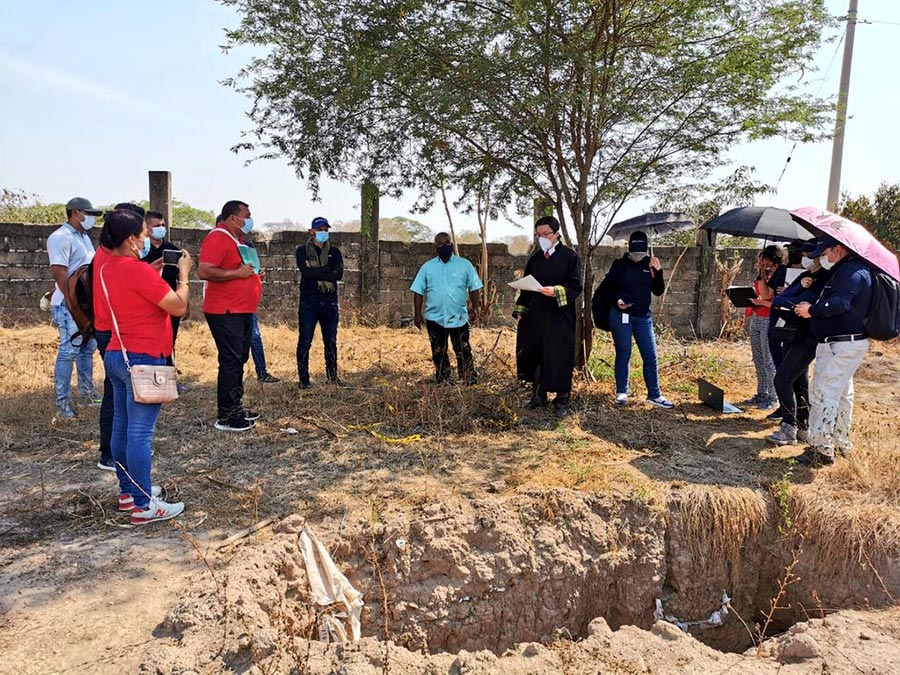
A peak in 2007 and a dramatic drop
After two years of investigation and verifying five different databases case by case, the JEP felt also confident enough to provide a preliminary photo of the problem.
Several things stand out in its quantitative analysis. Deaths unlawfully presented as combat casualties date as far back as 1982, although – as the curve clearly shows in every primary source – 78% of them are concentrated between 2000 and 2008. Its highest peak was 2007, with 1.624 deaths reported. Numbers then drop dramatically, with victims still reported until at least 2014.
However, it was the 6.402 victims between 2002 and 2008 – each of them identified by name, location and date – that captured public attention (in part because it’s the only consolidated figure the JEP’s document offers, with the absolute total surprisingly missing).
That’s also where politics come in, given that this time period matches the term of former president Álvaro Uribe, the JEP’s most powerful critic and political godfather of current president Iván Duque who has also tried to curb its work. Uribe, under whose watch false positives spiked and dropped, is not mentioned in the document – but everyone in Colombia understands the probe is centring on his administration, even if the JEP is barred from prosecuting former presidents. (The case hits other political nerves, as both current vice-president Marta Lucía Ramírez and Uribe’s successor turned foe Juan Manuel Santos served as his Defence Ministers for part of that period.)
But placing such an overwhelming figure in centre stage comes with its own risk. “I call for them to present evidence for every one of the 6.000 false positive cases”, Uribe challenged the JEP, even though the tribunal’s macro-case strategy means it will not prosecute each crime individually but rather explain a criminal policy through illustrative examples. Its previous decision, for example, used around 200 kidnapping cases to demonstrate how FARC’s policy was both widespread and systematic.
“These were real events and not isolated or rare cases”
Uribe and his party are also questioning the fact that the JEP is listening to human rights and victims’ organisations like those in the Colombia Europe United States Coordination Group (CCEEU), which the former president described as “politically motivated and sworn enemies of my government”. In their vision, the tribunal should only consider official state institutions as legitimate sources of information – a claim they haven’t raised in the kidnapping case against FARC.
“It’s part of an old pattern of unfair accusations against human rights defenders for their work. All sources are legitimate and truthful, whether they’re official or come from civil society - not to mention that the transitional justice’s mandate is precisely to listen to victims,” says Juan Carlos Ospina of the Colombian Commission of Jurists (CCJ), one of the country's oldest human rights NGOs. In fact, despite Uribe’s accusation of ideological bias, CCJ also represents kidnapping victims in the case against the former Marxist guerrilla.
Ironically, four of the five sources are state institutions and their databases all reflect the same upwards curve during his administration. The Attorney General’s Office – led today by one of President Duque’s closest friends and top advisors – states that 59,3% of these executions happened between 2006 and 2008.
On the other side, victims have sighed with relief, as the figure backs their historic complaints and excludes the idea that a few rotten apples were responsible. “We’re obviously not happy to see these numbers. But to a certain extent this is positive because it helps prove that these were real events and not – as some initially said – isolated or rare cases,” said Jacqueline Castillo, whose brother Jaime disappeared in 2008 and was found two months later in a mass grave 635 kilometres away from their hometown, in an interview.
Her organisation, the Mothers of False Positives, is using the rallying cry ‘Who gave the order?’, which many in Uribe’s camp interpret as pressure to legally go after him and his political circle. Last Friday they unveiled a gigantic mural in Bogota with the question and the stencilled faces of the Armed Forces commanders over the past two decades.
Do corrective actions matter?
As the JEP starts rolling out its regional indictments and establishing if these crimes were systematic, another question that the JEP has so far avoided looms overhead: should the tribunal also take into account the institutional transformations and changes which managed to curb false positives after 2007?
In its prioritisation plan, the JEP highlights a significant decrease after that year, noting the 92% drop between 2007 and 2009. This is significant because Uribe’s government caught wind of what was happening – and took corrective actions – before the scandal broke open (and even though hundreds of mothers had been searching for missing relatives).
During this two-year period, several important changes took place. First, the Defence Ministry drafted Colombia’s first ever operational law handbook detailing rules of combat and overhauled incentives, scrapping body counts and favouring demobilisations and arrests over kills. It also created the first human rights and international humanitarian law policy for the military, which brought in operational legal advisors to counsel commanders during the planning of military operations so as to ensure the safeguard of human rights. Civilian judicial police investigators were brought in to properly process combat zones as crime scenes. Dozens of officials were withdrawn and hundreds of cases were transferred from the military justice to the ordinary one.
Taking these reforms – which in hindsight might have legally saved Uribe – into account could allow the JEP to provide a more nuanced and complex picture of what happened. They could also help the tribunal understand, as it deems which officials were most responsible, who knew what, when and what they did – or not – with this information.
JusticeInfo asked the JEP about these issues, but its press director Hernando Salazar replied that “for the moment it won’t be possible” to make any justice available for an interview, without offering any timeframe. “We’ll have to wait a bit. I don’t know how long”, he said.
A case that underscores a politically divided country
Reactions to the JEP’s first decision on extrajudicial executions are showing that none of its forthcoming indictments will probably be met with the same relief and consensus as the kidnapping charges brought against FARC.
While a large political sector tries to position the narrative that the tribunal’s probe amounts to witch hunting, another one will possibly feel unsatisfied if the case only brings charges against medium-ranked officials and no politicians. Perhaps, unlike the previous case, this one underscores a politically divided country that still prefers black or white visions of its recent past.
For now, the JEP’s methodological outline suggests that false positives were a widespread crime, checking the first box to legally qualify them as a crime against humanity. As Juan Carlos Ospina says, “what’s most significant is that they’re acknowledging the magnitude of the phenomenon”.


